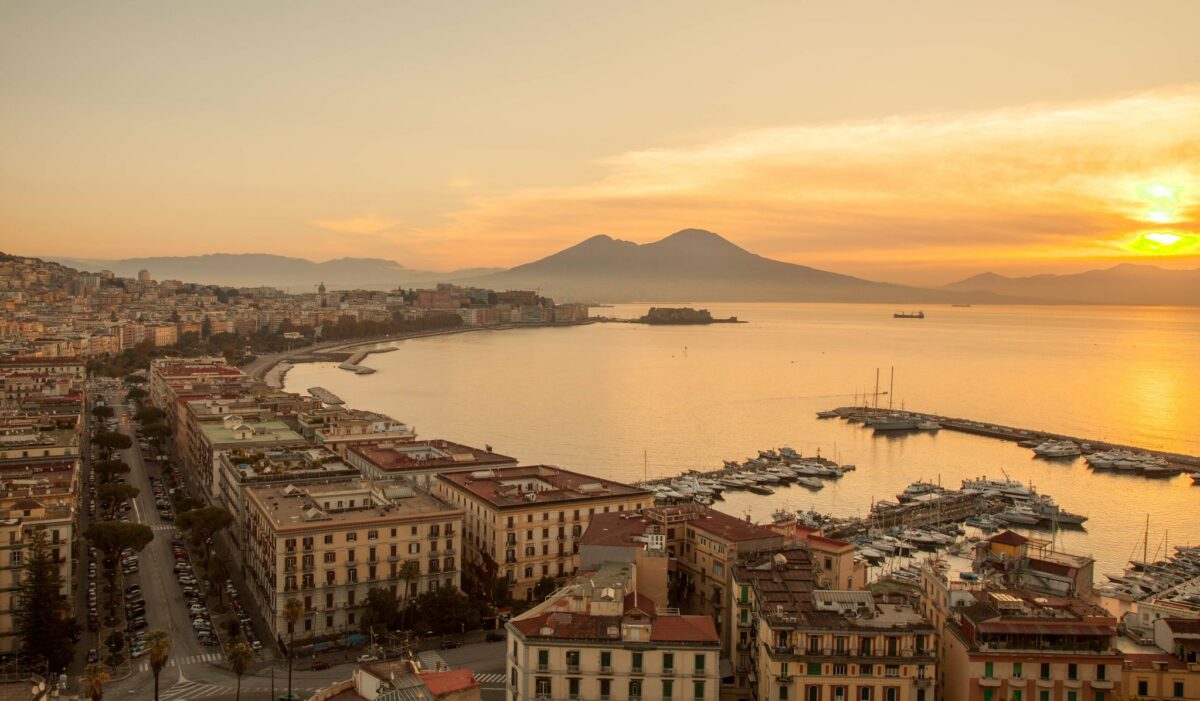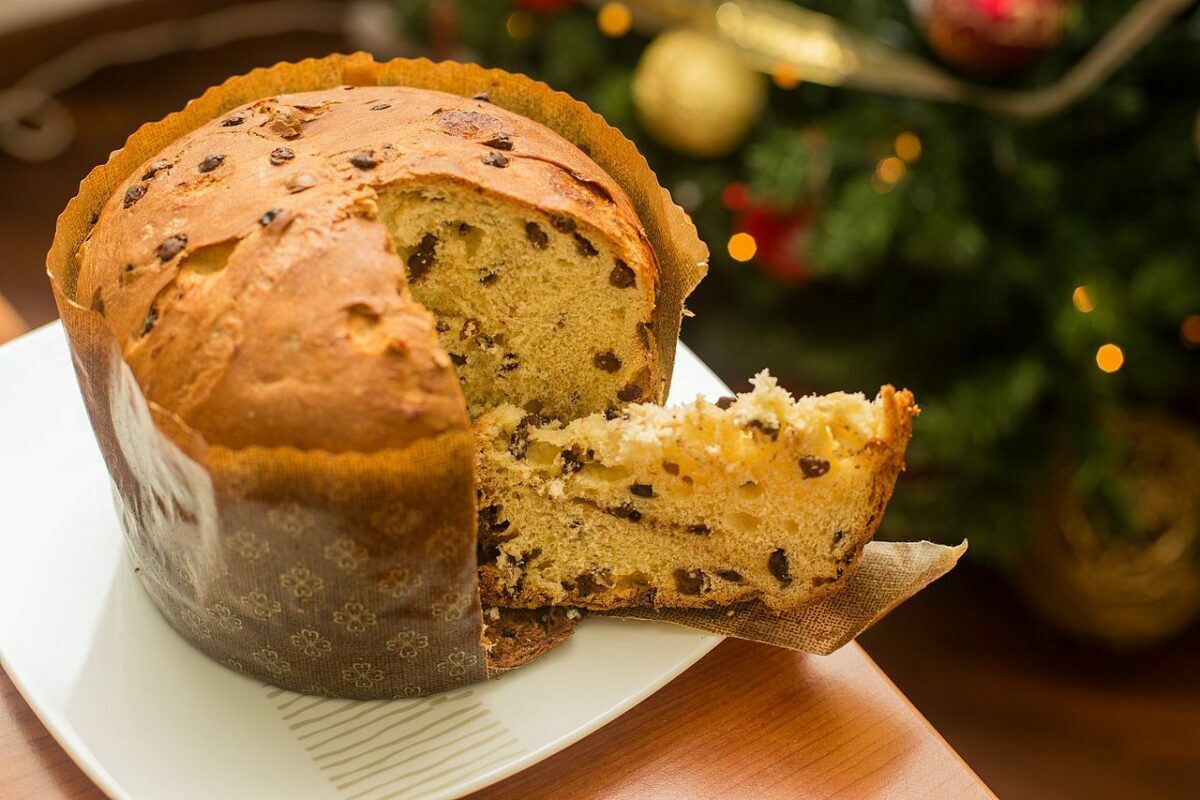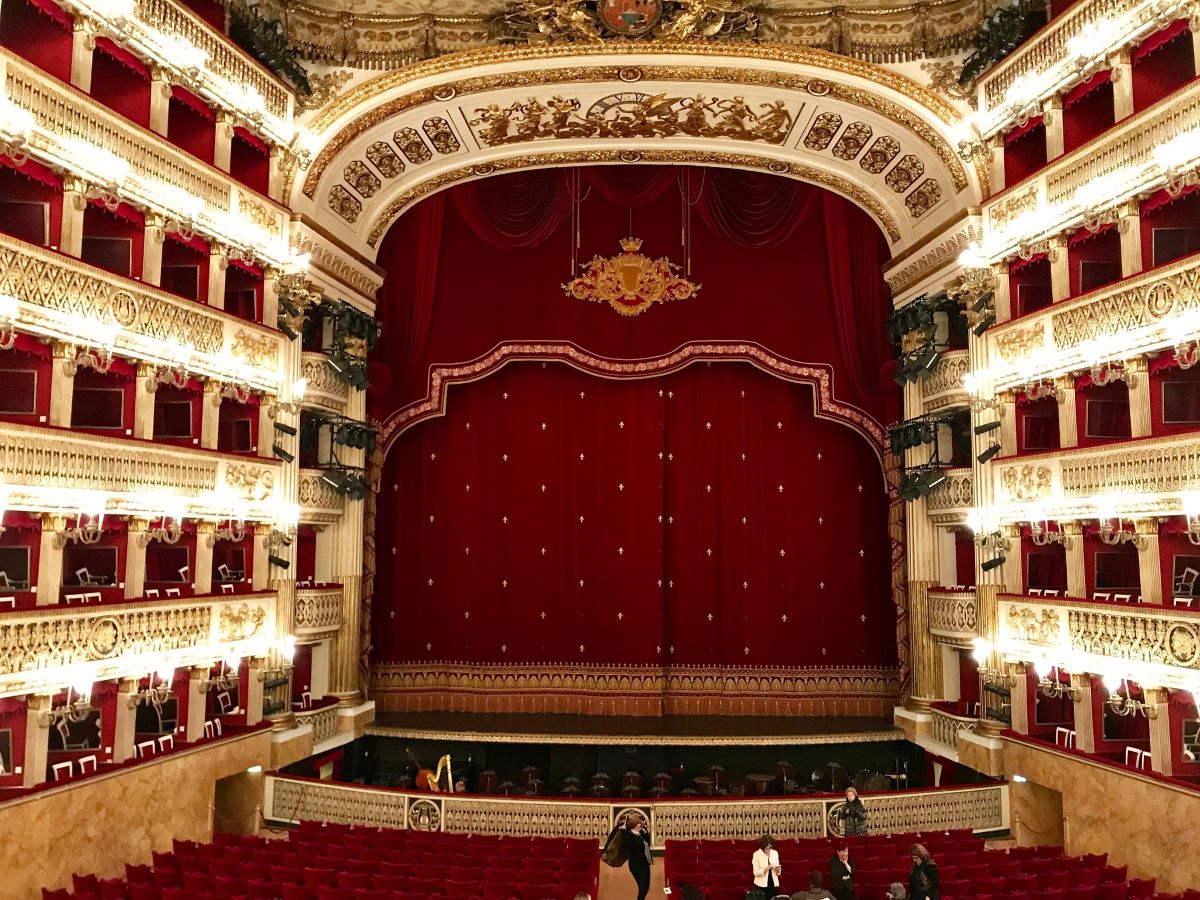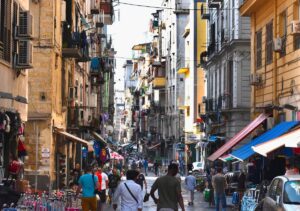Last Updated on November 10, 2025 by Emma Fajcz | Published: November 28, 2022
People often think of South Italy as a sunny beach getaway. And don’t get us wrong, the hot city of Naples and the surrounding coast make an amazing summer vacation! In Naples, however, there are many entertaining things to do in winter, especially around the Christmas season. Read on for what to pack, what to eat, and what to see.

What to Pack: Mild, Rainy Weather
The winters in Naples have mild temperatures but tend to be humid and often rainy. The temperature is usually between 45-55 degrees F (about 7-13 degrees C). Pack layers and rain gear when visiting the city in winter.
What to Eat: Seasonal Specialties
In Naples, it’s traditional to celebrate Christmas eve dinner with fish dishes like spaghetti alle vongole (spaghetti with clams) and baccalà (codfish). Check out Trattoria Nannì (Via Tommaso Senise, 2/3/4) for amazing cod, or ‘A Figlia d”o Marenaro for all types of seafood.

On Christmas day, families have lunch with traditional dishes like minestra maritata, a soup of vegetables and meat, oven-baked risotto sartù di riso, and meatballs in red ragù. Casual Ristorante al 53 (P.za Dante, 53) and elegant La Cantinella offer delicious Christmas lunches and traditional winter eats throughout the season.
Traditional savory dishes are nice, but who are we kidding? Winter sweets are the star of the show in Naples. Neapolitans love their pastries, after all. The list of winter desserts is long, but some of the most famous sweets of the season are pastiera, panettone, struffoli, and torrone.
What to Eat: Winter Sweets
Pastiera is a creamy orange-flavored tart made with cooked wheat and ricotta. It has a firm custardy texture. Try it at centrally located pasticceria Scaturchio.
Panettone is a sweet bread originally from the north with raisins or dried fruit, but there are also many different variations by artisanal bakers. Find fluffy variations of panettone from Sal de Riso (a world-famous bakery on the Amalfi coast) in supermarkets. They come in creative flavors like limoncello or pear and ricotta!

Struffoli is a delectable treat of fried dough balls glazed with honey. They usually have colorful sprinkles on top, making them irresistible for kids. Try them at Leopoldo Cafebar, a local chain with various locations in the city. The shop also offers mini pastiera to try.
Torrone is a dessert that is popular in all of Italy, but it can be traced to the Neapolitan region as far back as the 1800s in Benevento. It’s a sweet nougat covered in chocolate and has different variations from pistachio to coffee flavor. Try it at Gay Odin chocolatier.
What to See: Indoor Activities
Because it’s often rainy in winter, it’s good to have some indoor activities up your sleeve when planning a visit.
The Teatro di San Carlo is the oldest continuously active theater in Europe. Its spacious main hall is breathtaking—packed with red velvet seats, gilded decorations, and romantic lighting. It was built in 1737, destroyed by a fire in 1816, bombed in 1943, and rebuilt both times. It’s a survivor! Book tickets to an opera, symphony, or ballet online, or take a guided tour of the theater.

The Museo di Capodimonte is a former royal palace and hunting grounds. The museum was created in 1735 when King Charles VII of Naples and Sicily (the future King Charles III of Spain… confusing, we know) needed a place to store his famous Farnese art collection. It’s now home to classic masterpieces by Caravaggio and modern pieces by Warhol. It’s about a 10-minute drive from the city center. Take the 168 or C63 bus from Piazza Dante or the 178 bus from the National Museum. Or, grab a taxi.
If you want to experience a museum without being overwhelmed by massive collections of art, check out Museo Capella San Severo. It’s home to the Veiled Christ, widely considered to be one of the most impressive sculptures in the world. The marble sculptures present in the chapel have a level of detail, precision, and beauty rarely seen.
What to See: Winter Festivities
Neapolitans are serious about their nativity scenes, called presepe. Mentions of presepe can be traced all the way back to the 1300s, but the art form of the presepe really took off in the 1700s. Nowhere else is the culture of the presepe more evident than Via San Gregorio Armeno. The razor-thin street is packed with artisan shops selling figurines and other materials for presepe. Tourists and Neapolitans alike flock to the unique street to see the handiwork of local artists and electric presepe with moving figurines!

If you’re in Naples for New Year’s Eve, prepare yourself for chaos. Fireworks are technically illegal, but most families and friend groups set them off anyway. If you can get up to a vantage point like Belvedere San Martino for midnight, you’ll be regaled with a full 30-60 minutes of fireworks as far as the eye can see. Not joking! If you prefer being in the midst of the fray, head to Piazza Plebiscito where an annual concert is held, or down to the seaside Lungomare Caracciolo where many “official” fireworks displays are held.
After New Year’s Eve, the Epiphany (also known in Naples as befana) is celebrated in Piazza Mercato with a lively market of toys and food. The yearly market happens the night of January 5th. Taste the traditional octopus soup broro ‘e purpo along with traditional sweets and candy from the many stalls!
Explore International Cuisine Like a Local
Join one of our top-rated food tours that are offered in many cities throughout the world! With the help of our expert local guides, you’ll get to see, hear, and taste your way through these cities and learn about their fascinating histories and cultures.









